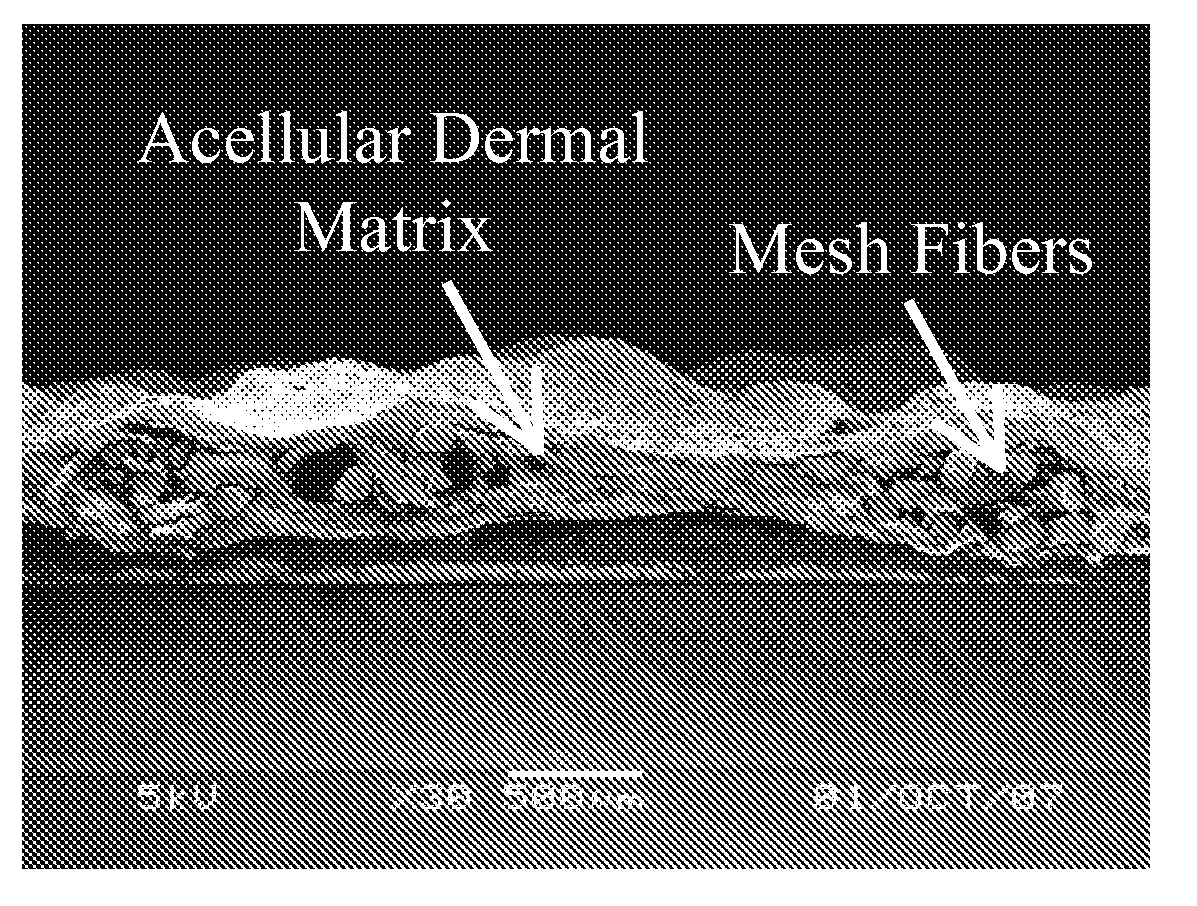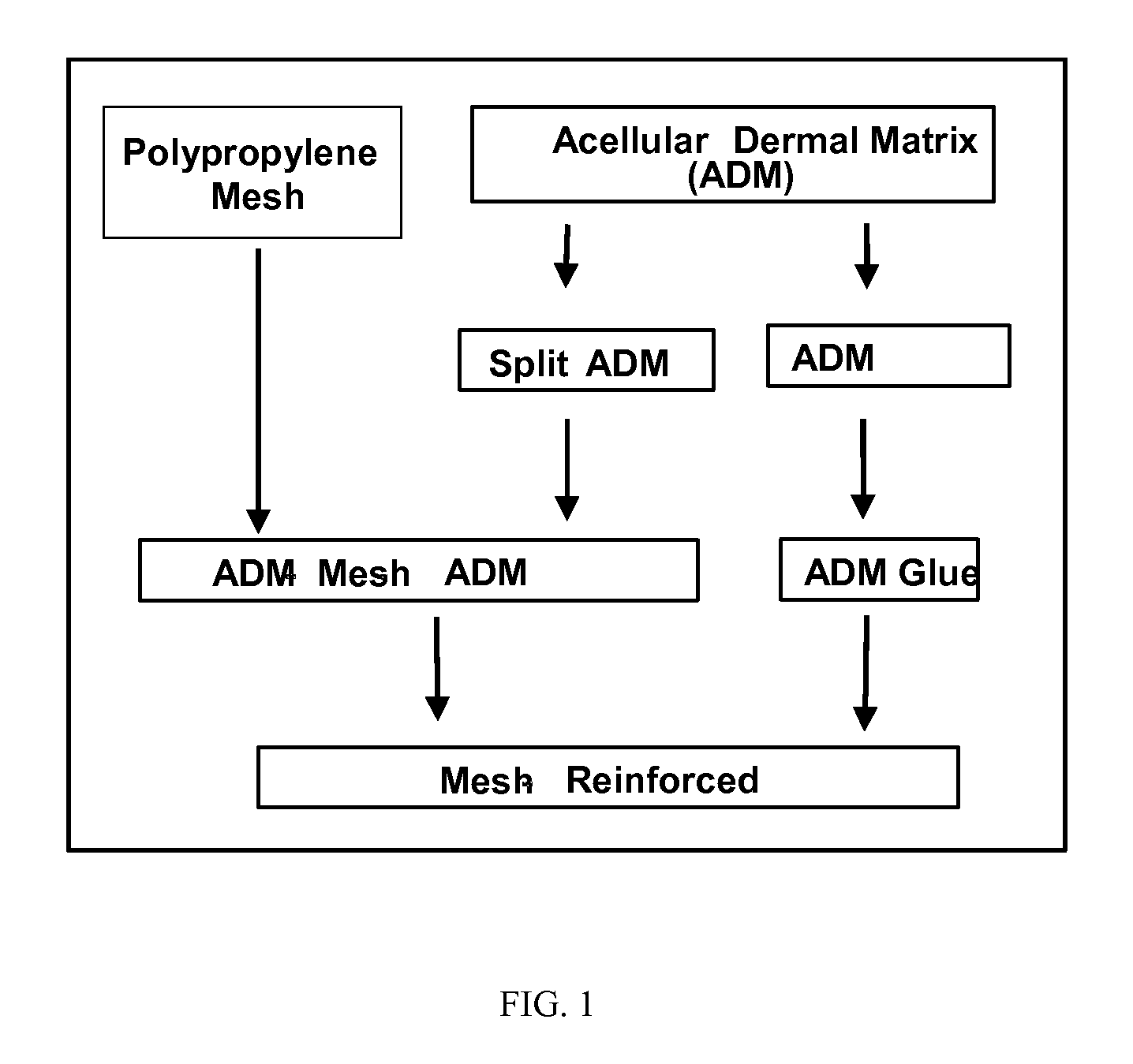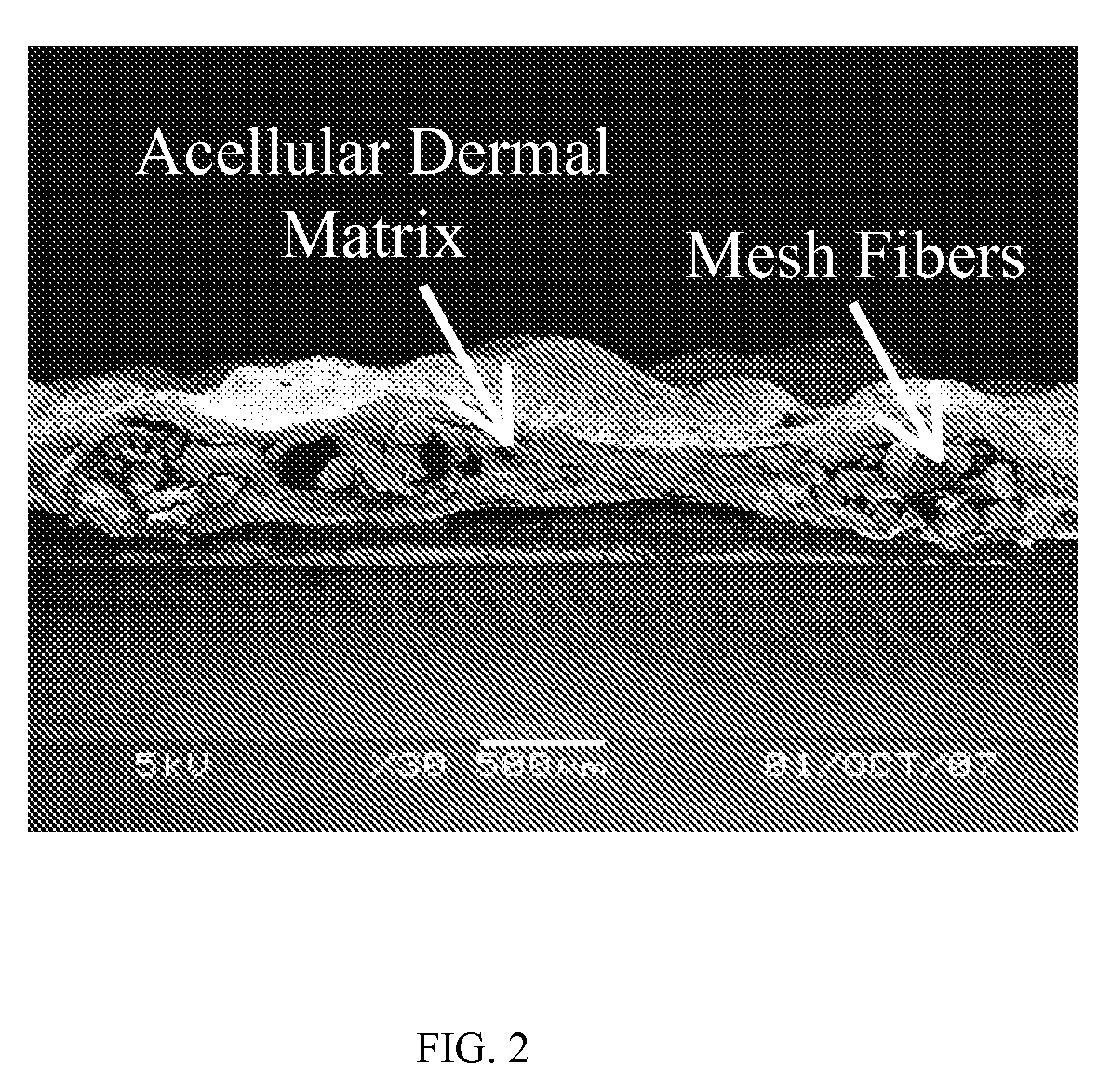Method of manufacturing acellular matrix glue
a technology of acellular matrix and manufacturing method, which is applied in the direction of protein adhesives, adhesive types, veterinary instruments, etc., can solve the problems of cumbersome processing techniques and poor handling properties, and achieve the effect of strengthening acellular
- Summary
- Abstract
- Description
- Claims
- Application Information
AI Technical Summary
Benefits of technology
Problems solved by technology
Method used
Image
Examples
example 1
Process For Formulating Acellular Matrix Glue
[0037]An acellular porcine dermal matrix sold under the tradename DermMatrix (by Advanced UroScience, St. Paul, Minn.) was milled into fine powder using a 6800 Freezer Mill (SPEX CertiPrep, Metuchen, N.J.). 1.0 gram of acellular dermal matrix powder was added into 10 ml of aqueous solution containing 7% glycerol and 1.3% acetic acid in a polypropylene tube. The tube was placed into an 80° C. water bath with magnetic stirring. After 3 hours of incubation at 80° C. the glue became opaque. The glue is removed from the water bath and allowed to cool down to 37° C. before use. The process is illustrated in FIG. 1.
example 2
Preparation Of Thin Layers Of Acellular Porcine Dermal Matrix
[0038]An acellular porcine dermal matrix, sold under the tradename DermMatrix (by Advanced UroScience, St. Paul, Minn.) was split into thin layers using a leather splitting machine (performed by Columbia Organ Leather, Columbia, Pa.) for prototype formulation. The acellular porcine dermal matrix was soaked in IPA for 24 hours before splitting. An 8 cm×8 cm square of acellular porcine dermal matrix was fed into the splitting machine and split to a final thickness range of 0.19 mm to 0.10 mm. After splitting the acellular porcine dermal matrix sheets were stored in IPA for further processing until ready to use. This process was repeated for all acellular porcine dermal matrix samples.
example 3
Preparation Of Reinforced Acellular Porcine Dermal Matrix
[0039]The process for preparing mesh reinforced acellular dermal matrix is shown in FIG. 1. The split acellular dermal matrix samples prepared in Example 2 were washed with deionized water and then lyophilized at 20° C. A light weight polypropylene mesh was prepared by incubating Ultrapro mesh (Ethicon Inc. Somerville, N.J.) in deionized water at 50° C. for 10 days to remove its absorbable component. The light polypropylene mesh was placed between two layers of 3×5 cm split acellular dermal matrix and was glued together with 3 ml of the acellular matrix glue prepared in Example 1 kept at 37° C. The whole construct was cooled down to room temperature and air dried in a cell culture hood.
PUM
| Property | Measurement | Unit |
|---|---|---|
| temperature | aaaaa | aaaaa |
| time | aaaaa | aaaaa |
| particle size | aaaaa | aaaaa |
Abstract
Description
Claims
Application Information
 Login to View More
Login to View More - R&D
- Intellectual Property
- Life Sciences
- Materials
- Tech Scout
- Unparalleled Data Quality
- Higher Quality Content
- 60% Fewer Hallucinations
Browse by: Latest US Patents, China's latest patents, Technical Efficacy Thesaurus, Application Domain, Technology Topic, Popular Technical Reports.
© 2025 PatSnap. All rights reserved.Legal|Privacy policy|Modern Slavery Act Transparency Statement|Sitemap|About US| Contact US: help@patsnap.com



